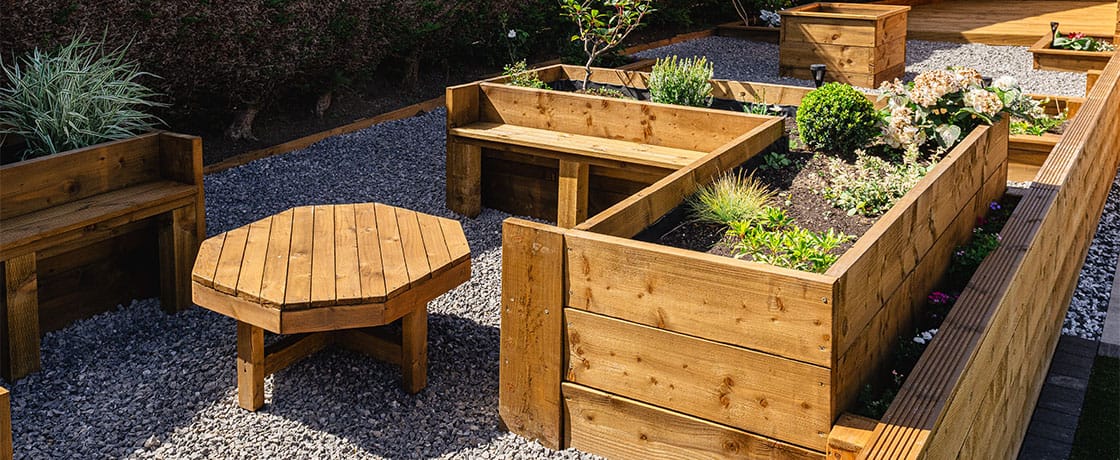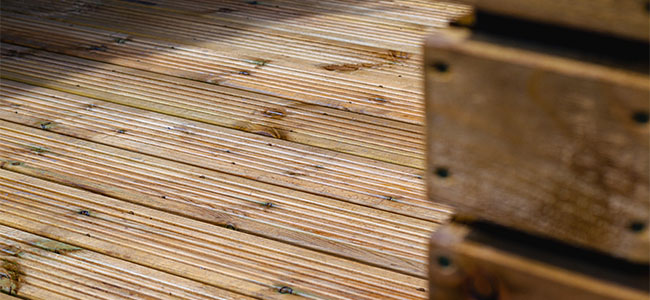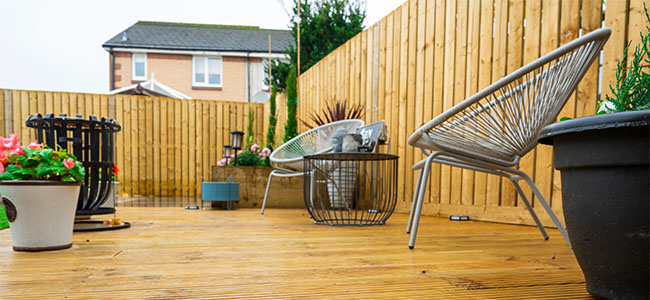
Built to Last: Your Guide to the Most Durable Timber for Every Job
Published on October 30, 2025
Posted in Advice & Reviews
by MKM
3 mins min read
Not all timber is up to the task, especially when it’s facing down decades of British wind, rain, and wear. Whether you’re building a deck, cladding garden storage, or setting posts for a boundary fence, picking the right species can mean the difference between 50 years of performance or an early replacement.
From traditional hardwoods to cutting-edge modified wood, there are plenty of durable options out there!

What Makes Timber Durable?
Durability isn’t just about picking a “tough” wood; it’s about how well that timber resists decay, handles moisture, and holds its shape over time. Here are the main factors that affect timber performance in the real world:
1. Resistance to Rot and Fungal Decay
Some woods naturally contain tannins, oils, or resins that make them more resistant to fungal decay and insect attack. European oak and larch are great examples, as their natural compounds act like built-in preservatives. Venice was famously built on thousands of oak and larch piles driven into the lagoon, a striking testament to how these timbers can endure in conditions that would normally destroy wood.
For species of timber that aren’t naturally durable, pressure treatment adds rot resistance using chemical preservatives. This turns fast-growing softwoods like pine or spruce into hard-wearing options suitable for structural work or ground contact.
2. Modified Wood
Modified wood is real timber that’s been enhanced, either chemically or thermally, to make it stronger, more stable, and longer lasting.
There are two main types:
- Acetylated Wood (e.g., Accoya): This uses a non-toxic vinegar-based treatment (acetic anhydride) to alter the wood’s structure at a cellular level. It reduces the ability of the wood to absorb water, dramatically improving stability and rot resistance. Accoya is the leading example, made from sustainable pine and offering Class 1 durability with minimal movement.
- Thermally Modified Wood: This method involves heating the timber to high temperatures in a controlled environment. The process removes sugars in the wood that fungi feed on, making it naturally resistant to decay. It also improves dimensional stability, though the wood can become more brittle than acetylated options.
Modified wood is ideal for cladding, joinery, and outdoor furniture, especially when you want long life, low maintenance, and environmental peace of mind.
3. Treatment Options
Lower-cost timbers like pine and spruce may not be durable on their own, but with the right pressure treatment, they can hold their own in harsh conditions.
- UC3 treatment is designed for above-ground applications (like cladding and fencing rails).
- UC4 treatment is for in-ground use (like fence posts or decking subframes), where decay risk is highest.
When specified and installed correctly, treated softwood can last 15–25 years or more, making it a highly cost-effective choice.
4. Density and Durability Class
Generally, denser timbers last longer; they resist water penetration, physical wear, and decay more effectively.
Timbers are classified under European Standard EN 350 into durability classes:
- Class 1 – Very durable (40+ years in ideal conditions)
- Class 2 – Durable (25–40 years)
- Class 3 – Moderately durable (15–25 years)
- Class 4–5 – Low durability unless treated.
Always match the timber class (or treatment level) to the exposure, especially for decking, fencing, and ground-contact applications.
Which Timber? MKM's wood by durability
We’ve pulled together the top-performing timber options, from species with natural longevity to high-tech solutions that redefine what timber can do.
|
Timber Type |
Durability Class |
Best Use Cases |
Key Strengths |
|
Class 2 |
Structural beams, cladding, high-end joinery |
Dense and rich in tannins. Traditional choice with excellent lifespan. MKM stocks oak sleepers and formats for exterior use. |
|
|
Accoya® (Modified Wood) |
Class 1 |
Cladding, windows, doors, garden structures |
Timber re-engineered through acetylation. Accoya resists rot, doesn’t swell or shrink, and offers exceptional durability. Made from sustainable pine and stocked by MKM. |
|
Western Red Cedar |
Class 2 |
Cladding, decorative fencing, outdoor features |
Lightweight, stable, and naturally resistant to insects and decay. Great visual consistency and low movement. |
|
European Larch |
Class 3–4 |
Cladding, fencing (with treatment) |
Tough, durable, and affordable, with a warm reddish hue. Performs well when treated or used in lower exposure areas. |
|
Treated Softwood (Pine/Spruce) |
Treated to Class 3–4 |
Framing, fencing, deck subframes |
A cost-effective solution when properly specified. Pressure treatment (UC3/UC4) extends service life significantly. Widely available at MKM. |
Durability classes are estimates and depend on conditions, installation, and maintenance.
Which Timber? Durability by Budget
Different projects call for different investment levels. Here’s a quick guide to balancing budget and expected performance:
|
Budget Tier |
Timber Type |
Estimated Lifespan |
Ideal Applications |
|
Budget |
Treated pine or spruce |
15–25 years |
Fence posts, subframes, structural framing |
|
Mid-Range |
Larch, Western Red Cedar |
20–35 years |
Decorative cladding, fencing, garden rooms |
|
Premium |
Accoya, Oak |
35–50+ years |
High-end joinery, exposed structural timber, cladding |

Six Ways to Maximise Timber Lifespan
Even Class 1 timber won’t last if installed poorly. These steps help any species reach its full potential:
1. Design for Drainage
Timber should shed water easily. Avoid flat tops and horizontal surfaces that hold moisture. Add drip edges, angled caps, and overhangs where possible.
2. Ventilate and Separate
Use battens or spacers to allow airflow behind cladding. Keep posts off concrete where possible. Let the timber dry out quickly after rain.
3. Seal End Grain
End grain absorbs moisture far faster than face grain. Always treat cut ends with a high-quality preservative or end grain sealer during installation.
4. Use the Right Fixings
High-tannin timbers like oak or cedar will corrode bare steel. Use stainless steel or hot-dipped galvanised fixings to avoid staining and structural issues.
5. Finish for Protection
UV-resistant stains, breathable paints, or water repellents can preserve appearance and reduce splitting. Reapply every few years based on exposure levels.
6. Inspect and Maintain
Look for early signs of damage like rusted fixings, moss build-up or water stains. Fix minor problems quickly before they become major repairs.
For extra durability, explore our range of woodcare products .
Build Once, Build Right
If you want timber that truly lasts, it comes down to smart decision-making:
- Match the wood to your site and environment.
- Choose the right durability class or treatment.
- Install with care and detail.
- Maintain it regularly.
Whether you go for the long-lasting strength of oak, the innovation of Accoya, or the value of pressure-treated softwood, MKM has the timber, knowledge, and service to support your project from day one.
At MKM, we do more than supply timber - we help build projects that stand the test of time. Every branch is run by a local expert who understands the construction needs of their region.
Whether you’re building for the next season or the next 50 years, MKM has the timber, knowledge, and local know-how to help you get it right the first time.
Visit mkm.com or pop into your local branch: we’re built around you.